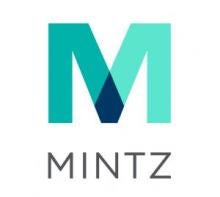- The Trump administration released the AI Action Plan last week, unveiling a new roadmap to AI dominance and global leadership for the US. It highlights actions that remove regulatory barriers to prioritize developing AI infrastructure through data centers, restoring semiconductor manufacturing, and modernizing today’s grid to expand AI adoption.
- The plan is structured around three pillars – innovation, infrastructure, and AI diplomacy and security – that guide the government’s approach to efficiently implement artificial intelligence. The framework outlines more than 90 action items for implementation. While no due dates are mentioned, it directs efforts across multiple levels of government and federal agencies, emphasizing cross-sector collaboration.
- Additionally, firms that rely on AI infrastructure may struggle due to limited access while strategies to create domestic chips are prioritized. Copyright and data ownership issues also remain unresolved, raising concerns for companies utilizing generative AI tools to reassess their procedures to navigate through legal barriers and comply.
The Trump administration released its AI Action Plan, a new outline and blueprint for the US to increase AI innovation and win the AI race. The 28-page plan highlights key implementations to remove regulatory barriers, prioritize investment in new AI infrastructure, and defend national security and economic interests.
It consists of three main pillars: (1) Innovation, (2) Infrastructure, and (3) International Security and Diplomacy.
In his speech last week, President Trump also highlighted that the US stance on intellectual property and AI would be a “commonsense application” that would not require AI companies to pay for every use of copyrighted materials in training models. This would allow companies to train on copyrighted works without licensing the material, despite no direct mention within the plan.
He also signed three executive orders. The first calls to fast-track federal permitting and streamline reviews to expedite AI infrastructure construction, The second is to expand American exports of AI hardware and software. Lastly, the third order bans the federal government from procuring AI technology “infused with partisan bias or ideological agendas”
Pillar I – Accelerate AI Innovation
The first pillar outlines a strategy for the US to lead in the transformative application of AI systems into different sectors along with their development. It highlights minimizing government barriers, fostering open innovation AI expansion, and prioritizing national security.
- Remove Red Tape and Regulation: Launch a government-wide review to identify and roll back regulations slowing AI development; protect Federal Communications Commission (FCC) and other agencies from restrictive state AI laws.
- Protection of Free Speech and American Values: Remove DEI, climate change, and misinformation-related language from the National Institute of Standards and Technology (NIST) AI Risk Management Framework.
- Open-Source and Open-Weight AI: Improve financial markets for large-scale computing power through National AI Research Resource (NAIRR); publish new National AI Research and Development (R&D) Strategic Plan for federal AI research investments.
- AI Adoption: Establish regulatory sandboxes or AI Centers of Excellence to test AI tools, and convene sectors, such as healthcare, energy and agriculture, to develop AI standards and measure productivity gains.
- American Workforce in the AI Economy: Promote AI training and prioritize AI skill development into career training and create an AI Workforce Research Hub to study labor impacts.
- Next-Generation Manufacturing, World-Class Scientific Datasets & Advancing AI Science: Invest in AI hardware innovation, robotics and incentivize data sharing in federally funded research; prioritize interpretable models via DARPA, NSF, and CAISI.
- AI Evaluations Ecosystem and Control: Expand NIST’s role in setting evaluation guidelines and testbeds; increase federal AI training.
- AI in Government and Defense: Strengthen the Chief AI Officers Council (CAIOC) and cross-agency collaboration; mandate AI access and training for federal employees and improve AI use in high-impact services.
- Commercial and Government AI innovations & Combat Synthetic Media: Collaborate with industry to guard against insider threats and IP theft; strengthen legal tools and forensic standards to deal with synthetic media (e.g., deepfakes).
Pillar II – Build American AI Infrastructure
The second pillar highlights the importance of building new AI infrastructure, primarily to create new data centers and energy sources. To match the rapid innovation of AI and its demand for a massive expansion of American energy capacity, the US is prioritizing modernizing its grid to increase its competitiveness.
- Streamline Permitting for AI Infrastructure: Expediting approvals for energy and data centers through NEPA exclusions and expanding FAST-41; make more federal land available for AI infrastructure and ensure all is built with US-based technology to avoid foreign compromise.
- Build a Modernized, Resilient Power Grid: Stabilize today’s grid and grow with next-gen energy sources like nuclear fusion and geothermal, while reforming markets to support grid reliability.
- Restore US Semiconductor Manufacturing: Reduce dependence on foreign chipmakers through CHIPS program to advance domestic chipmaking.
- Develop Secure Data Centers for Defense & Intelligence: Create new security standards and build classified data centers for military and intelligence use.
- Build the AI Infrastructure Workforce: Launch national workforce initiative to identify and train workers for AI infrastructure jobs and promote industry-led training programs, apprenticeships, and curriculum updates.
- Strengthen Cybersecurity for Critical Infrastructure: Create an AI-ISAC for sharing AI-specific threat intel and issue updated guidance for AI incident response.
- Ensure Secure-by-Design AI Systems: Establish AI Assurance standards for intelligence applications across intelligence and defense agencies.
- Prepare for AI Incident Response: Update national cybersecurity playbooks to include AI-specific risks and coordination.
Pillar III – Lead in International AI Diplomacy and Security
The third and final pillar focuses on driving the adoption of American AI systems to increase its global influence and leadership in the AI race. It highlights staying committed to constructing data centers and prioritizing computing hardware performance and AI models.
- Export American AI to Allies and Partners: Create a program to export packages (hardware, software, standards) and gather proposals for full-stack AI export packages; leverage agencies to help allies adopt US AI tech under approved security standards.
- Counter Chinese Influence in International AI Governance: The Departments of State and Commerce will lead efforts in international forums to advocate US-aligned, innovation-friendly governance models.
- Strengthen AI Compute Export Control Enforcement: Use location verification features to track chips and prevent diversion; collaborate with intelligence community to monitor global chip exports and enforce controls in high-risk regions.
- Loopholes in Semiconductor Manufacturing Export Controls: Expand export controls to include sub-system components critical to chip manufacturing.
- Align Protection Measures Globally: Develop an AI-focused diplomacy plan to align global export policies and prevent backfilling by allies.
- Evaluate National Security Risks in Frontier AI Models: Assess risks from foreign AI used in US critical infrastructure (e.g., potential backdoors).
- Invest in Biosecurity: Require federal research recipients to use nucleic acid synthesis tools with strict screening and customer checks, OSTP to create data-sharing frameworks to detect malicious activity in genetic synthesis and build ongoing infrastructure to evaluate biosecurity risks related to AI.
While the plan focuses heavily on expanding AI in terms of infrastructure and implementations, a few key areas receive limited focus:
- Congress previously attempted to introduce the 10-year AI moratorium aimed at restricting state-level regulation of AI but ultimately scrapped the proposal. The executive order takes a different approach, tying regulation to funding, particularly in compliance with AI research and development. There is little detail on how diverging state regulations would be managed.
- In his speech last week, President Trump emphasized that AI companies should not be forced to pay for copyrighted materials used in training models. He stated it is “not do-able” and by doing so, companies are “not going to have a successful program”. The plan does not address any initiatives surrounding copyright issues, which the administration announced that this issue should be left to be decided by the courts. This continues to be a concern for tech companies trying to navigate any existing legal barriers in AI.
- While there is an emphasis for tighter export controls on chips, there is no mention of the commercial use of foreign-made semiconductors which continues in non-defense sectors specifically.
As expected, the report has provoked significant reactions in both directions, with AI and technology industries expressing strong support, while consumer advocacy groups and the public have voiced reservations.
The AI Action Plan places heavy emphasis on establishing American leadership in AI development. As action is taken to implement these policies, companies may need to reassess expansion strategies, supply chains, and potential access to controlled technology by adversaries. They should anticipate changes in market access as export controls are heightened.
According to an editorial in The Washington Post, President Trump’s AI Action Plan represents a good start to ensure global dominance in AI but will require several efforts to maintain it. As many of these AI policy implementations are still taking shape, we will continue to monitor, analyze, and report on their potential impacts on companies and industry practices.
Aliza Inam contributed to this article






 />i
/>i

